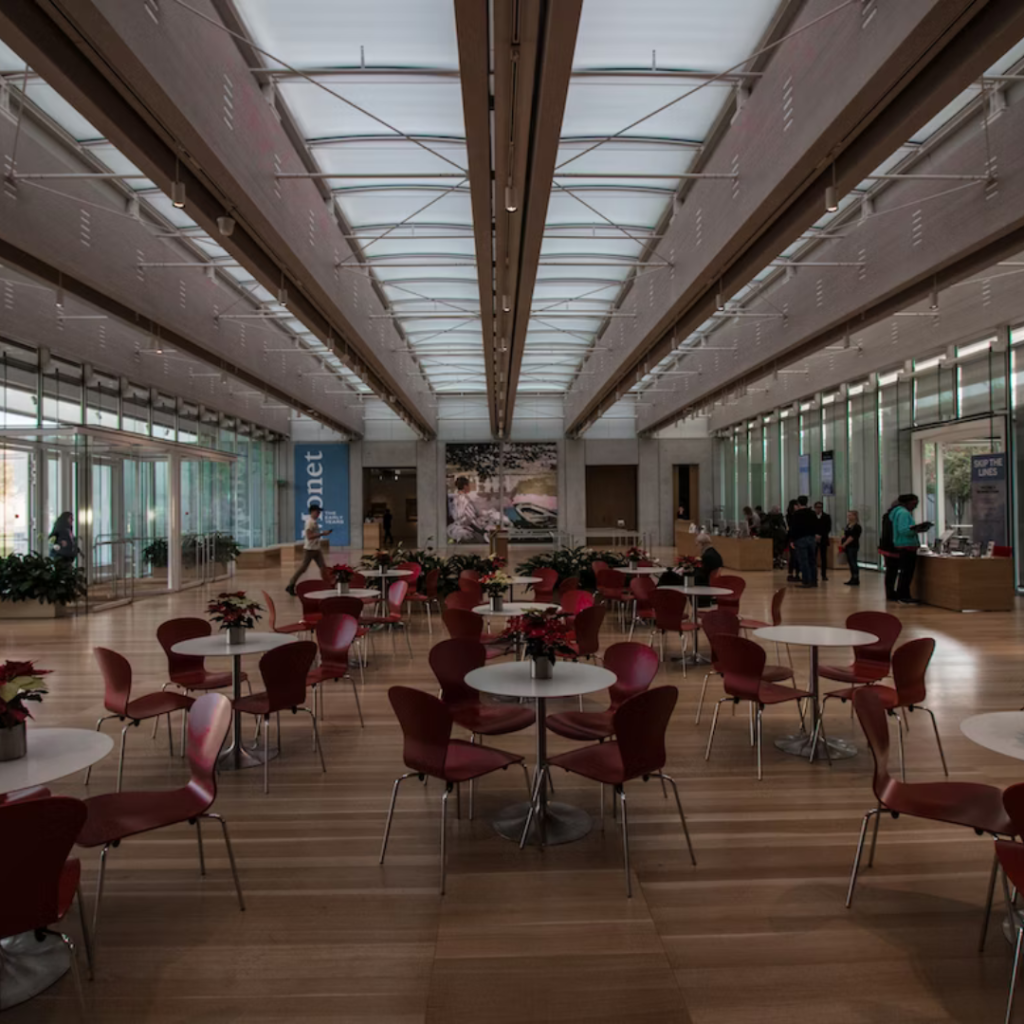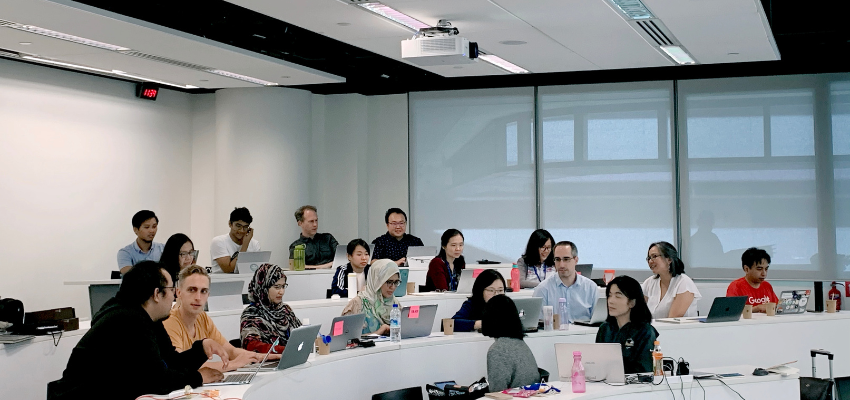Teaching is a challenging skill that demands adaptability and resourcefulness. I’m always interested in developing my teaching and one of the most memorable and impactful was reflecting on my physical teaching spaces. As educators and library instructors, we often find ourselves in situations where we have to teach in oddly configured rooms. Whether it’s a narrow space, an irregular shape, or unconventional furniture arrangements, these unique teaching environments can present both opportunities and obstacles. In this blog post, I’ve chosen 4 strategies and creative solutions for making the most of these oddly configured rooms, ensuring an effective and engaging learning experience for both teachers and students.
Working in challenging teaching spaces
Embrace the space
Rather than viewing the oddly configured room as a limitation, embrace it as an opportunity for creativity. Take some time to familiarize yourself with the space, its limitations, and potential advantages. Assess the available resources, such as natural lighting, seating arrangements, and wall space. By understanding the room’s unique characteristics, you can tailor your teaching methods accordingly.

Strategic seating
When space is limited, strategic seating arrangements can make a significant difference. Consider creating small groupings or pods where students can work collaboratively. This fosters teamwork, communication, and a sense of community within the classroom. Additionally, positioning yourself strategically in the room allows you to have a better view of all students, ensuring effective classroom management.

Utilize technology
Technology can be a powerful tool when teaching in oddly configured rooms. Utilize interactive whiteboards, projectors, or document cameras to project content onto a wall or screen. This helps overcome spatial limitations and ensures that all students have a clear view of the materials being presented.

Incorporate movement and active learning
In confined spaces, it is essential to incorporate movement and active learning strategies to keep students engaged. Integrate activities that involve stretching, standing, or physical movement to break up sedentary periods. Kinesthetic learning techniques, such as role-plays or simulations, can also be effective in enhancing student understanding and participation.

Examples of teaching spaces
The following rooms are the ones that I’ve found most challenging to teach in at Carleton University.
Southam Hall 506
What makes this space challenging? This space is one of the most awkward spaces I’ve taught in. EVER. There are no tables and students use moveable furniture. That isn’t want makes the space challenging, it’s the placement of the computer terminal. Similarly, this impacts the ability of the instructor to use the keyboard and mouse.
When you finally get the computer oriented in a way that is functional, the retractable screens are so far away from the keyboard making navigating the library website and databases less than ideal.
Solutions? That said, the moveable furniture does allow for interesting configurations for teaching. You can engage with the class by having them reconfigure themselves into groups for discussions and activities. The fact that each chair includes a personal desk allows students to complete activities such as work sheets.
As someone who hates being stationary in the classroom, I utilize computer clickers often in the classroom. This helps me move around the classroom without being stuck at a less than ideal podium. I’ve even purchased my own clicker so that I know I will always have it on me for presentations.
Minto Center 5050
What makes this space challenging? Orientation. This room is shallow in terms of its depth but is extremely wide. This room is one of the most challenging spaces for people who teach from behind the podium (sometimes you have to be, for example giving live search demos). To be effective in this space you either need a very loud voice (which carries) or a microphone linked to the rooms’ speaker system.
Solutions? Utilize the institutions microphone system. I don’t often use them but familiarizing yourself with them can be extremely beneficial. Again, clickers can be helpful for getting out from behind the podium allowing you to move toward the middle of the room, effectively making you not have to yell as loud (if you are a quite person).
Richcraft Hall 3110
What makes this space challenging? This is probably the most deceptive classrooms I’ve ever taught in. It doesn’t help that this was the first classroom that I taught an information literacy class in, ever. The problem with this classroom is the terminal is on a traditional desk that you sit at. For me, I am someone who likes to move around the classroom and engage with students, so sitting at the front of the class was very challenging for me.
Solutions? Once again, this is why I utilize a clicker in the classroom. However, I didn’t realize the power of a tool like that in my first year of teaching. It’s a simple fix, but this was a classroom that helped define my teaching style.
Odd spaces don’t have to be a detriment
Teaching in oddly configured rooms presents a unique set of challenges, but with the right mindset and creative strategies, it can also lead to exciting opportunities for innovative teaching and learning. By embracing the space, having strategic seating, utilizing technology, and using motion, educators can transform these unconventional environments into engaging and dynamic learning spaces. Remember, the power of teaching lies not only in the physical classroom but also in the ability to adapt and inspire students regardless of the room’s configuration.
Header photo by CX Insight on Unsplash

